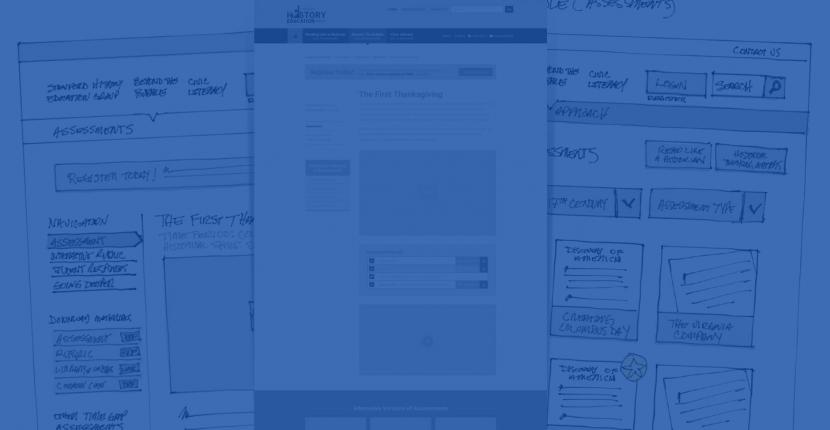Selling online is easy, right?
Get a shopping cart and a merchant account, and... Done! Well, hold on a bit. You’ll want discount codes and special offers. You want to accept Paypal, too. Probably need to add bundles. And maybe you should list your products on Amazon’s storefront? Channel diversity is good, right? Speaking of Amazon, can we make our shopping cart work exactly like theirs?
Okay, so maybe the technology side of e-commerce is not actually that easy. The sad truth is that technology is actually the easier part of e-commerce. Getting people to buy your product ... now that’s the tricky bit. Selling online is much more than just providing a great checkout experience, yet so few e-tailers are putting in the time and effort to see truly revolutionary results.
Even if you’re a successful offline chain, making the transition to online can be daunting. Even big retailers struggle. Take Walmart, for example. Walmart’s online store makes up just 2% of its total revenue. What’s more, Walmart.com makes about 1/10 of what Amazon.com does. And Walmart is an 800-pound gorilla. Walmart should know how to sell, right? If they are struggling to compete online, then you know it’s not an easy mountain to climb.
Content is king
I don’t mean the click-bait you see passed around Twitter and Facebook like hot potatoes. I mean real, genuine, amazing, content. Content that informs, educates, or entertains. It is this kind of content that is scarce on the Internet.
But great content takes time to create and consume. It’s subjective. It excites and sometimes offends. It takes risks to connect with the audience. This is something that many corporations have a difficult time doing. I mean, the whole purpose of most entrepreneurial ventures is to dial risk down as low as possible.
But what does content have to do with commerce? As it turns out, a lot.
Product and Content are yin and yang. They are complementary halves that, together, can make an incredibly effective e-commerce site.
Bottom line: Content-driven commerce, if done right, can be a central part of your product showcase—from the homepage down to the product pages themselves.
The new king...same as the old king
The crazy thing about great content? People have been craving it for years. There’s nothing new here. Just take a look at the original saying, “Content is King.” This goes all the way back to 1996 and who, of all people uttered these words? Bill Gates. That’s right. The Tech Titan himself.
“Content is where I expect much of the real money will be made on the Internet...”
--Bill Gates
So if Bill Gates saw this back in 1996, what’s taken so long for e-commerce to get here?
What do we mean by content?
If you read Bill Gates’ original piece, you’ll see that he didn’t just mean videos or articles or audio recordings, though all those are content.
When it comes to an interactive network such as the Internet, the definition of "content" becomes very wide. For example, some forms of computer software are a form of content.
So if we think about an e-commerce site, what do we mean by content?
The product page itself is a type of content. It’s not the product. It’s a representation of the product and on that page we have product specifications, descriptions, images, videos of the product in use.
And of course, there are user reviews. This is the OG of e-commerce content and one that nearly all stores have come to embrace.
This is all low hanging fruit, though. We’ve been doing this kind of content since the dawn of e-commerce. But there’s something missing here. Let’s step back a second and look at an in-store purchase experience.
Taking cues from old school
Say you need a suit. Maybe you go to a specialty store like Brooks Brothers. As soon as you walk into the store, you are greeted by someone who asks you a few questions about what you’re looking for, types of occasions you’ll need it for, and a host of other great questions before they start pulling jackets off the rack. Yes, it’s a sales process, and you know it, but it’s incredibly useful. The person is asking the right questions and has some great recommendations.
All these things are ways that offline organizations are engaging their audience and helping them make better, more informed decisions. And it works.
Sadly, this isn’t translating to their online stores. Rather, the stores expect that you know what you need and they focus on their latest sale or their free shipping offer. Or they direct you to categories of suits—categories that might not mean anything to you if you don’t purchase suits regularly.
When you walked into Brooks Brothers, the associates romanced you. They took the time to get to know you and your needs. Online, you need content to romance your customers. People will buy if they feel romanced.
Don’t misunderstand, special offers are an important part of doing business (online and off), but so many e-commerce sites treat them like it’s the only thing that drives sales. Just take a look at any homepage—even brands that spend time creating engaging content use special offers. (Lowe’s and Home Depot come to mind here.)
But, but, but...
“Isn’t the Internet saturated with content?” you might ask.
Yep. The Internet is flooded with new content every day. Anyone can publish content on the Internet—and millions of people do it every day.
There’s only one thing to do about this concern: Ignore it.
Seriously. Ignore it. There is always a market for great content.
Most of the content published on the Internet is poorly written, poorly thought through, and just plain bad. You’re not going to create that kind of content. You’re going to create amazing, well-written content that rises above the chaff.
You are going to inspire and excite people with your content.
What does content-driven commerce look like?
Alright! You’re ready to start creating content for your online storefront.
Wait! What does that look like?
There are many ways to do it, but the best ways are simply to talk about the ways your products help people. If you sell suits, then educational content on the different styles of suits or how a suit is made and tailored. Photo spreads on the latest trends. Instructional content on how to knot neckties—or how to pair different style neckties with shirts. Or how to change the style of a suit by changing your shirt. Or even just honest expert opinion about why they should pick one brand of tie over a different brand.
Once you’ve written the content, the next step is to make it an integral part of your storefront. Give it the same billing you give your special offers. Don’t make this content a second-class citizen, that makes your content feel less authoritative. Your customers will notice.
For some inspiration on how you can integrate content and product, let’s step out of the world of commerce and a look at how ItalyMagazine.com has accomplished this. (Full disclosure: Italy Magazine is owned and operated by Bluespark.) Italy Magazine offers informative, educational, and entertaining content. Mixed throughout the site are opportunities to buy recipe ingredients, Italian-made products, and vacation services (like hotels and tours).
Take a look at their Food & Wine section. They have some great stories (“My Family Christmas Eve in Sicily and The Feast of 24 Treats” is a great read) and mixed in with the great personal stories or product recommendations (e.g. “Five Italy Foodie Items Everyone Needs in Their Kitchen.”) Each product has a great picture, a description that explains its inclusion on the list, and a purchase option. After all, why wouldn’t you want to purchase one of these authentic Italian products after reading about it from a trusted source? It’s a solid piece of content that will appeal to their audience.
Therein lies the power of content-driven commerce: Build trust as an expert and make recommendations as the trusted expert.
There are plenty of lessons to learn from site like Italy Magazine. From the way they romance their readers to the way they fit product right into the content.
Content-driven commerce drives sales
Content-driven commerce is about making your expertise and story just as important as your products and special offers. It’s about taking the time to build a relationship with your audience and form a genuine connection with them so you can make recommendations that resonate with them.
It’s a bold step. One that takes time and effort to pull off and one that cannot be programmed. If done right, it’s also one that will reap huge rewards.
We'd love to partner with you on your next project!
Since we’re big on relationships, we’re all about finding the right fit. Will you take the next step with us to see if we’re a match?





